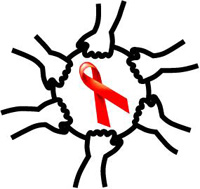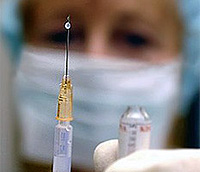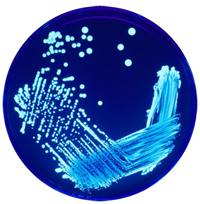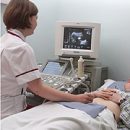AIDS (HIV) - acquired immunodeficiency syndrome. The state of the deepest immunodeficiency, developing as a result of the action on the immune system of the human immunodeficiency virus (HIV).
Content
From the history
For the first time the disease was registered and described in 1981 in the US. First
observations concerned the group of young men who have on the background
developing immunodeficiency unknown etiology arose
Pneumonia, fungal lesions of the skin, mucous membranes, developed
depletion, diarrhea, malignant tumors. These diseases ne
succumbed and ended with the death of patients. Initially
Strange disease got a name «Humosexual disease», but
Soon another term appeared — The syndrome of the acquired immunodeficiency
(AIDS), since such states began to register not only
homosexuals, but also in women, children, patients who were
Transfit blood. There was an assumption that this syndrome is
infectious sexually transmitted disease during operations,
injections, blood transfusions (parenteral).

In 1983, a group of scientists in Paris found in patients new, earlier
Unknown virus. Almost at the same time American researchers
reported the allocation of such a virus in AIDS patients. Term «AIDS»
means the ultimate stage of the disease at present, nevertheless
popular literature, media disease is often
Called still — AIDS.
Among the specialists generally accepted is the idea of
Natural origin HIV, which appeared long ago as a result
mutations, but did not apply to the broadly insulation of it among
Limited contingent of residents of Central Africa.
In the history of medicine, there was not yet infection that would simultaneously
covered five continents and had a constant growth towards. By
calculations, in the world today there are 30.6 million adults and children,
infected HIV and AIDS patients.
HIV affects those cells of the human body that
are designed to fight infection — Cells of the immune system. They are playing
Keyword in the work of protective furs, mobilizing compo-nonents
immune system whose task — attack and destroy
Pause microorganisms.
Now scientists are known that HIV affects other types of cells, including
including the cells of the central nervous system, as well as the cells of red and
White blood in which the virus apparently is in «Dormant» condition
for a long time before starting actively
multiply.
HIV was found in blood, sperm, vaginal secrets, breast
milk and tears. The paths that the virus can be transmitted from infected
man to unimpressed, very limited. It should be noted that for
virus transmission is important not only the degree of intimacy of contact, but also
Number of pathogen. So, in tear liquid and breast milk virus
present in small concentrations. Therefore, tears are dangerous for
infection liquid do not take into account and breastfeeding
try to replace with special mixtures for infants. Although B
developing countries where it is impossible to feed the newborn
any mixtures (such products are not produced and not sold)
infected women often feed their breastfeeds because risk
infection this way is small.
Ways transfer HIV infection
Unprotected sexy contact — vaginal, anal, oral.
Three quarters of all cases of HIV infection in the world are due to sexual
Contacts, and most of them are heterosexual contacts,
That is, contacts between women and men. If there are others
sexually transmitted infections, especially with ulcers
manifestations, faithfulness of HIV infection rises in 10—50 times. One
sexual contact is enough to become HIV-infected.
Infected blood or blood preparations. HIV transmission by this way
practically excluded in developed countries where mandatory
Verification of donor blood (Russia includes such countries).
Multiple use of medical needles and syringes can also
lead to the transfer of small amounts of blood from one person to another
And, therefore, to HIV infection. Thus, the virus applies
Among drug addicts using a common syringe. Multiple
The use of needles without intermediate sterilization is still
Danger of infection in medical institutions. Possible transmission of HIV
If the infected blood gets into the wound on the body of the unreleased
man. Recently in the youth environment has become fashionable to do
Tattoos. Through repeated needles for «tattoo» same
Possible transmission of HIV. Transfer of a virus from mother to child. By
statistics, on average one of four babies born from
HIV-infected mothers infected HIV. Perhaps infection
Baby through breast milk.
Numerous studies have proven that HIV is not transmitted
everyday contacts, touches or kisses, eating and water,
as well as bloodsowing insects. It should be remembered that half of the cases
HIV infection falls on the age group from 15 to 24 years. Virus
For many years (on average, about 10 years) may not be manifest itself, and only
Special blood tests detect the presence of an infection in humans. Availability
HIV in human blood is determined by analyzing blood on HIV antibodies.
Those people in the blood of which are detected antibodies to HIV, are considered
Seropositive, or HIV-positive. A person may not know that he
infected with HIV. Consequently, official data on the number of people,
which, as a result of testing, was detected by HIV, reflect only a small
Part of the total number of infected. Most of the infected HIV
remain outwardly healthy for many years and can transmit the virus
Other people. With the development of signs of AIDS disease average
Life expectancy of a person ranges from 1 to 3 years.
AIDS Treatment (HIV)
Treatment of AIDS patients includes antiviral drugs that suppress the reproduction of the virus.
After confirmation of the diagnosis, approaches to further
Maintain patients. Approach to choosing therapy should be individual,
risk-based. Decision about when to start
Antiretroviral therapy, should be taken depending on the risk
Progression of HIV infection and the degree of immunodeficiency severity.
If antiretroviral therapy be started before the appearance
immunological and virological signs progressed and
diseases, then its positive effect may be the most
pronounced and durable.
Antiviral therapy is prescribed patients since the stage
acute infection. The main principle of AIDS therapy, like other viral
diseases, is timely treatment of the main disease and its
complications, first of all pneumatic pneumonia, sarcoma Kalosh,
DNS lymphoma.
It is believed that treatment of opportunistic infections, the sarcoma of the caps
AIDS patients should be held sufficiently high doses
Antibiotics, chemotherapists. Their combination is preferred. At
Selection of a medicinal product except sensitivity,
It is necessary to take into account the tolerability of his patient as well
The functional state of its kidneys due to the danger of accumulation
The drug in the body. The results of therapy depend on care
Compliance with the methodology and sufficient duration of treatment.
Despite the sufficiently large number of drugs and methods
treatment of patients with AIDS, the results of therapy is currently very
modest and cannot lead to complete recovery, because
Clinical remissions are characterized only by the oppression of the process
breeding the virus and in some cases by considerable reduction
morphological signs of the disease, but not full of them
disappearance. Therefore, only with preventing the breeding of the virus,
Probably, it will be possible to give the body resistance to opportunistic
infections and development of malignant tumors by recovery
Functions of the immune system or replacement of destroyed immune cells.









